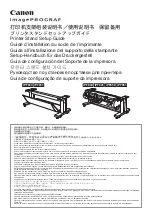
22
1B 4B 10 00 00 00 00 00 00 00 00 00 80 40 20 10 08 04 02 01 0A
The DP7 accepts ESC K, L and Y commands. These and other graphics modes are also selected by an ESC
[ g m n p where m + 256 X n is the following graphics data byte count plus one and p selects graphics
densities as follows:
p value:
0
1
2
8
9
11
12
Density: 60x72
120x72
120x72
60x180
120x180
180x180
360x180
In the 180 dpi vertical modes, each group of 3 following graphics data bytes will be printed as one 24 dot
vertical stroke.
3.13 COMMUNICATIONS INTERFACE
The standard interface provides for RS-232 asynchronous serial communications at 1200 (DP6 only), 2400,
4800, 9600 or 19200 (DP7 only) baud and has a multiple line input buffer. Characters may contain either 7 or
8 data bits, even, odd or no parity and 1 or 2 stop bits. These parameters are all keypad programmable. See
3.13.4 and 3.13.5 for Dual Port and Parallel interfaces.
3.13.1 Input Buffer Operation
All commands and characters received except immediate status requests, display and reset commands are
placed in a first-in, first-out input buffer of 3K (DP6) or 11K (DP7) bytes. The BA status bit indicates at least
1000 characters of unused buffer are available. Transmission to the printer should be block structured (less
than 1000 characters per block) with ENQs issued at the end of each block to check for transmission errors
in the preceding block (requiring retransmission) and buffer availability for the next block. ENQs are not
required for blocking data if DTR or XON/XOF protocols are selected from the keypad but these protocols do
not allow for detection of transmission errors. Characters with transmission errors will be replaced by a "@"
under those protocols.
The input buffer can receive the next line of data while the previous one is being printed. This eliminates
transmission induced delays in printing. For this mode of operation SINGLE LINE INPUT BUFFER should be
selected from the keypad and BA indicates an empty buffer.
The buffer may also be used to receive all commands for printing an entire document. In this mode of
operation the full 3K or 11K byte buffer is utilized and BA indicates at least 1000 characters of unused buffer
space. This technique can reduce host attention to the printer but caution must be used to determine correct
recovery from document jams and operator intervention during printing.
In the unlikely event that a document should become jammed in the printer, printing will stop and
"DOCUMENT JAM" will be displayed. The next status word requested by the host will have the document jam
bit set. Once notified, the host may prompt the operator by writing recovery instructions to the display.
As part of the recovery procedure, the host may require all previously transmitted data to be destroyed. This
might be the case if the transaction must be restarted. Previously transmitted data can be destroyed if the
host transmits a DC4 in mode C or a CAN in mode I. After the operator has cleared the jam condition by
moving the printhead to the left wall and removing the document, all data in the FIFO will be destroyed. The
host should request status and check the document jam bit in the status word before retransmitting data.
The operator may also destroy the contents of the FIFO buffer if, after removing the document and moving
the printhead to the left wall, the CLEAR key is depressed. The host must then be notified by the operator
that the transaction data must be re-transmitted.
3.13.2 Interface Protocols
If the BLOCK protocol is used, ENQs must be issued to block data and the returned printer status byte should
be examined by the host to check for transmission errors that require retransmission of the last block.
If host software cannot support the BLOCK protocol, either DTR or XON/XOF protocols may be selected
from the keypad. In these modes the DTR signal will go false (negative voltage) or a DC3 (Xmit off) will be
transmitted if less than 1000 characters of space are available in the buffer when a CR or document
















































